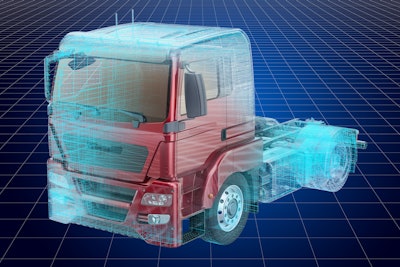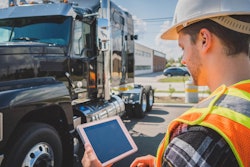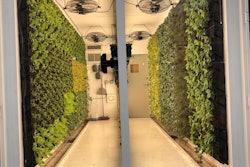
In fleet terms, sustainability might refer to moving your fuel type to renewable energy and reducing your criteria and greenhouse gas emissions profile. As such, most fleet operators strive for a balance of both approaches, depending on fleet mission and available alternatives that meet their specific needs.
Fleets transitioning to effective sustainability solutions have significant challenges, typically including fleet replacement planning and how to address a legacy fleet. Each can have different solutions while focusing on improved sustainability as an outcome.
Replacement vehicle challenges involve selecting the best fit for an application among the alternatives. On the other hand, dealing with improvements to legacy fleet represents a different issue. Many of the best technologies are expensive and hard to retrofit, even when possible. In some cases, a retrofit investment will meet or exceed the vehicle’s value at its current age.
The choice challenge is difficult simply due to the wide variety of available products. There’s fascinating growth in the number of products fueled by electric energy, such as battery electric, hybrid electric, plug-in hybrid electric and fuel cell vehicles. Beyond electric solutions, compressed natural gas (CNG), propane and liquified natural gas (LNG) also offer reduced engine emissions as compared to traditional petroleum options. In addition to changing engine technologies, viable solutions for meeting sustainability goals should include renewable fuels. Renewable CNG, renewable diesel, ethanol and biodiesel fuels each represents a viable retrofit strategy for most fleets.
Know the options
By knowing your options and planning thoughtfully, you can map future acquisitions with a focus on reduced emissions and/or renewable fuel products. Many specialized vocational trucks are extremely complex and expensive, with a longer life cycle than standard or off-the-lot vehicles. This will, in most cases, require acquisition/support infrastructure like specialized refueling stations, or for electric options, recharging infrastructure. While there are many alternative fuel and technology choices, they all require some degree of infrastructure.
Infrastructure can be challenging on its own, whether it’s the cost to install your own refueling site or use local public access stations or even just product availability. For example, a predominately warm region may not have the same gas pipelines installed for CNG as colder locations (a result of using the same fuel for home heating). Although building a sustainable legacy fleet may not draw as much attention as the latest emerging technologies, it can positively influence the budget, as these solutions can sharply reduce the cost to move fleet to improved sustainability. Case in point: Sustainability can be as simple as doing the same amount of work while consuming less resources.
Monitor driver behavior
It’s important to know how your fuel is being used to ensure the best fit for any fleet application. There are several identifiable drive patterns and cycles, but the most common include
- Highway operations — high mileage, high speed
- Inner city urban operations — low mileage, low speed
- Stop and go — pickup and delivery operations
- Work support — high idle with power export (power takeoff operation, for example)
In addition, look carefully at your need for driver training. Hard acceleration and high-speed operations burn excessive amounts of fuel regardless of vehicle category. Driver behavior can be addressed through accurate monitoring and focused training. A one-size-fits-all approach should be avoided. For example, a farmer will have a different driving profile than a distributor delivering to a retailer. Defining these profiles and creating specific driver behavior expectations will help reduce excessive fuel use based on operating parameters.
Financial impact
Evolving to sustainability is not an inexpensive task. Every solution has a financial implication, and the smartest fleet operators often blend a series of solutions to optimize sustainability improvements, while minimizing financial impact.
Replacements
It’s important to examine your entire fleet. Take time to complete a thorough life-cycle cost analysis and understand what it means. One of the most common mistakes is to stop an evaluation after looking at purchase price; often, a sustainable vehicle will have significantly lower lifetime fuel costs. Some alternatives have proven to provide lower maintenance costs over vehicle life.
Many fleet operations have a defined payback period to measure effective equipment deployment. Remember, when looking at a longer payback period while performing due diligence on your vehicle decision, there is no commonly accepted monetized value for sustainability. Consequently, when presenting recommendations to decision-makers, be sure to point out exactly how much greenhouse gas and criteria emissions will be reduced over the vehicle’s effective life. It’s important to account for maintenance savings and carefully research product resale value. All too often, when assessing resale value, decision-makers will use prevailing beliefs over facts.
Retrofits
Sometimes, retrofits are a solution for improving sustainability. While not all technologies are appropriate for retrofits, some are suited for improving legacy fleet sustainability performance. Liquid fuel substitutes (like biodiesel and renewable diesel) are great examples of retrofit strategies that are quick and inexpensive to deploy with well-documented performance improvements.
What’s best for my fleet?
There is no single answer, and there are a lot of variables, depending where you land within the logistics map (e.g., farmer, processor, distributor or retailer). It’s imperative to define organizational objectives and barriers before taking action. Considerations include
- Fuel cost
- Total cost of ownership
- Public image
- Continuity of fuel supply
- Regulatory compliance
Other factors involve required capital investment, desired return on investment, vehicle and technology availability and fuel access in a given geographic area.
Alternative fuels and electrification can deliver success in reducing emissions and publicizing sustainable efforts. While there are wide differences in alternative fuel applications, it’s essential to understand the benefits of each.
- Biodiesel and renewable diesel – essentially drop-in fuel requiring no modification to diesel vehicles
- Propane – relatively inexpensive infrastructure
- CNG – inexpensive fuel source
- Plug-in hybrid and electric – inexpensive energy source
Funding
Being sustainable and funding the mission can be difficult. When making the case for sustainability, there can be a twofold approach.
First, there are long-term considerations. Often, alternative technologies come with a larger upfront acquisition cost than conventional counterparts. Looking at long-term scenarios (such as conducting a life-cycle cost analysis) is a critical step when making any decision.
Second, federal and state funding can be vital. Lowering the final price for alternative and sustainable technology should be a priority for decision-makers. Running a life-cycle cost analysis can reveal even more savings. Availability of state and federal funding can be in continuous flux. Having tools and resources at your disposal to research opportunities is crucial for long-term sustainability programs.


















